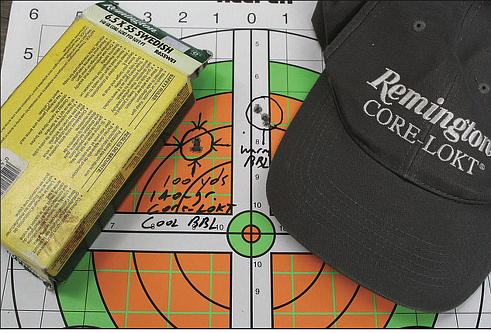Some hunters invest a lot of time and effort in scouting for game, but they neglect sighting in their weapons.
Your weapon is the one element of the hunt that really matters, and success depends entirely on your proficiency with your rifle, shotgun or bow. Many hunters assume their rifles will be on target when they pull the trigger on Saturday, which is opening day of the modern gun deer season. Most of the time they are right. However, many hunters haven't fired their rifles since November 2019. A lot can change in a year, especially if you finally used up that box of Core-Lokts that you bought in 2012.
"Gimme a box of 270," is what you said to the person working the sporting goods counter. He or she handed you the first box in reach, and you were back in business. It might be a different brand of ammo, one that uses a different style of bullet. The bullet weight might be different. Remington, Winchester, Federal, Hornady and others use different powders. The brass is different. The primers are different. All of these things, individually and in concert, dramatically affect a rifle's accuracy, especially if a rifle is picky about its ammunition preferences. A rifle that shoots 1-inch groups at 100 yards with Hornady ammo might not shoot another brand of ammunition accurately enough to ensure a clean kill.
You might have jarred your rifle or hit the scope on the side of a desk or table and knocked it off zero. You might even have upgraded your scope. The guy at the scope counter bore-sighted it. You intended to sight it in, but you've been really busy this year and never got around to it. Bore-sighted should be pretty close, you tell yourself, but it probably isn't.
The only way to know is to spend a little time at a target range. Curiously, quite a few hunters will get around to that Friday evening, mere hours before opening day, at their deer lease, no less. It's been pretty quiet at the lease since last November and deer have contentedly gone about their business suddenly get a rude reminder of some bad memories. The mature buck that has been showing up on your cameras like clockwork for the last few weeks inexplicably goes AWOL this weekend. Gee, I wonder why?
Some hunters who miss deer or hit deer that they don't recover go a step better. They'll take a break around lunchtime on Saturday and try to sight in their rifles on opening day. I hear them do it every year.
Duck and goose hunters do the same thing, with the same random results. Waterfowl hunters often are not particular about their ammunition. Many buy whatever is on sale, or they switch types to try something new. Many of them buy a new choke tube every other year. The one thing they don't do is check their combination on a patterning board.
According to Ducks Unlimited, your choke and load combination for mallards should concentrate 90-100 pellets in a 30-inch circle at the distance you most often shoot ducks. For small ducks, it should be about 130 pellets. For geese, 50-60 pellets in a 30-inch hole should be sufficient. Keep in mind also that a portion of your pellets will arrive on target before other pellets. Your pattern should be consistent enough to form a cloud through which a duck must fly.
This can get expensive. A box of modern nontoxic shot is an investment for the blue-collar hunter. If the first shot throws a terrible pattern, you've got $25 worth of shells that you can't use. The cost multiplies if the next brand doesn't perform well. Shot size is a big factor, too. Your choke might not pattern No. 2 "Kill 'Em Dead," but it might do great with No. 4.
For my Remington V3, Hevi-Shot Hevi Metal duplex loads from a modified Carlson's choke is perfect. That choke also does well with cheap Federal blue box No. 2 steel shot, but that endorsement means absolutely nothing. A Benelli with a Patternmaster or Kicks High Flyer, or whatever the choke du jour, might not pattern those loads at all.
Bowhunters are probably the most conscientious practitioners, except for one little problem. Most bowhunters practice on targets at known distances with level shots from the ground. When it's time to hunt, they climb 16-20 feet high in a tree. Now you're shooting at a sharp downward angle, and you must also account for the extra distance created by your height. Ideally you would take a rangefinder reading before drawing your bow, but you don't usually get that much time in a hunting situation, and that's also too much movement.
Finally, most bowhunters practice with field points. Your field point is the same weight as your hunting broadhead, but it is still aerodynamically different and will not fly the same. If you don't play the game exactly the way you practice, you're making an educated guess.
